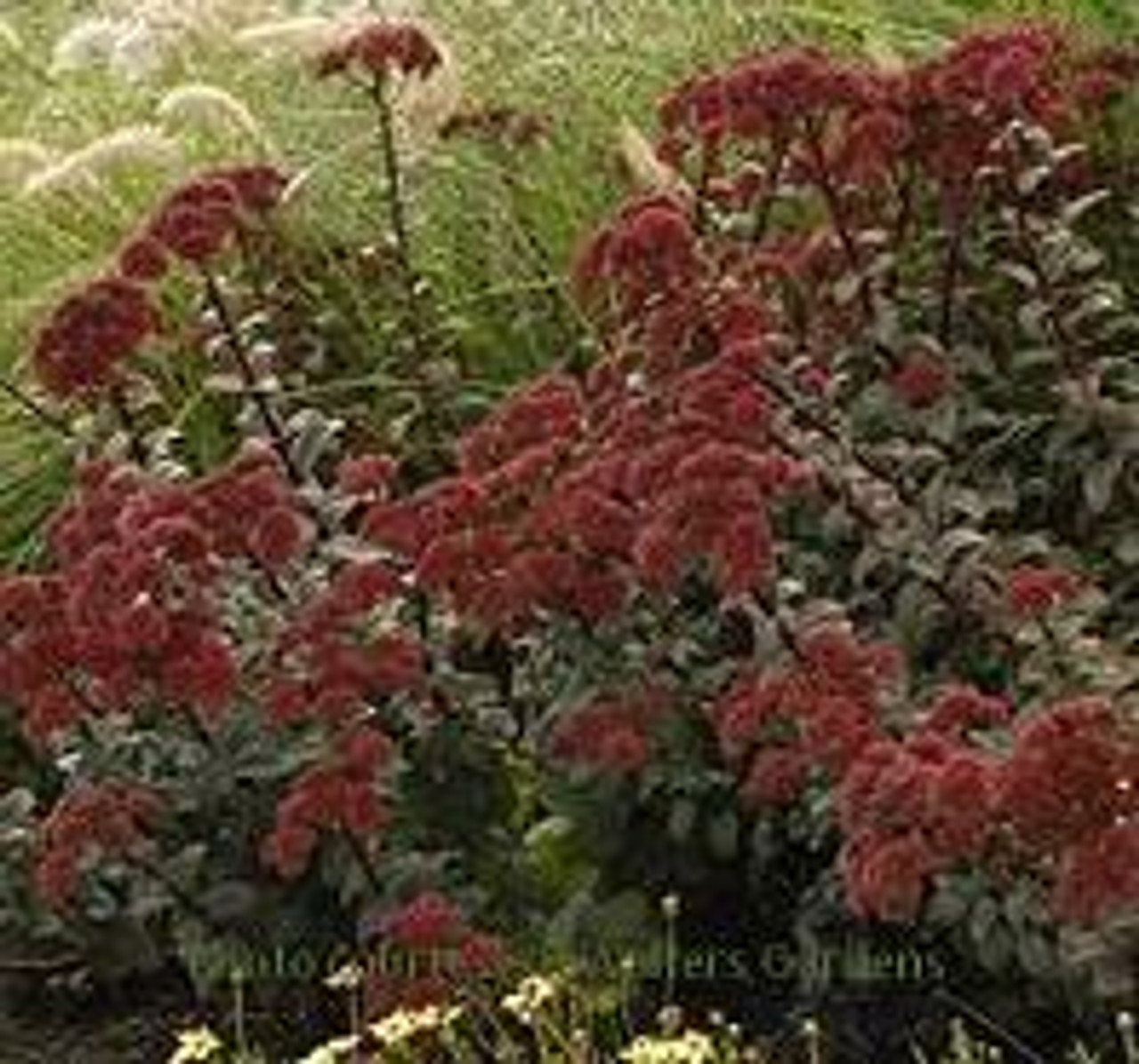Product Description
Sedum 'Red Cauli'Common name: Stonecrop-Autumn; aka Hylotelephium ??Red Cauli??,
Zones 3 to 9.
Full sun.
Plants reach 14 to 18 inches tall and 18 inches wide;
semi-upright arching mound.
Growth rate: Moderate, easy to grow.
Reddish stems bear grey-green leaves with neat serrated edges become tinged with purple tones as the season progresses. In late summer, small clusters of pale pink buds open to reveal bright pink flowers which age to red. Flowers are perhaps the reddest of any upright Sedum. Deep maroon 'Red Cauli' seeds extended the season of interest well into fall. Often, all four stages of the flowers can be seen on the plant at once.
Royal Horticultural Society's Award of Garden Merit 2006
Performs best in full sun in moist, well-drained soils, but it is extremely urban tolerant. Sedum can be grown in highly stresul sites around rockery with thin, poor, or very dry soils, of various pH, low fertility, extreme heat, drought, and high light reflectance; however, it is not tolerant of wet or poorly drained soils. Plants grown in rich soil tend to be lanky and open. Most Sedum varieties should be grown in full sun to light shade; however, lower growing types will survive in partial shade.
Sedum is one of the most popular perennials grown in American gardens because it is very easy to grow and hardy in most areas of the country. Thick, succulent leaves which can store water, allow established Sedum to withstand periods of drought. Divide Sedum every 3 to 4 years to maintain compact growth habit. Older plants tend to split in the center if they have not been divided. Pinching the taller varieties back by half in early summer will also help prevent them from splitting. This plant is not usually bothered by pests or diseases.
Attracts butterflies and bees. Deer and rabbit resistant. Terrific low-maintenance plant.
Other Details
The most important part of the plant is its root system. Healthy roots are the foundation of a healthy, vibrant plant. The type of plug container used is based on the specific needs of the plants. Perennials offered as bare root traditionally perform better when planted as bare root.Planted in a specialized mix, potted plants have well established root systems. Top growth stage will vary depending on the current life cycle and time of year when shipped. In Winter and early Spring dormant plants may be shipped. Dormant plants may be planted right away, even before the last frost date.
Most bare root varieties are field grown for at least one season, though Hemerocallis and Hosta are grown for two seasons. The bulk of the soil is removed during the harvesting process and the tops of most varieties are trimmed back to the crown. They are graded, packed in shredded aspen or sphagnum moss and stored in freezers until ready to be shipped.
See our Container Sizes and Bare Root Perennials pages for more information.
Plant information and care is provided in the Overview section, Plant Genus Page and general information is provided in the Planting Care & Guides. Additional questions can be asked on each Plant page.
Plant Spacing: Using the maximum mature spread or width of a plant to guide spacing, ensures space to grow to full size. To fill an area sooner, plant them closer together. Just remember, future thinning or transplanting may be needed.
Water: Keep a close eye on newly planted perennials, especially throughout the first growing year. Most early plant loss is due to too much or too little water!






